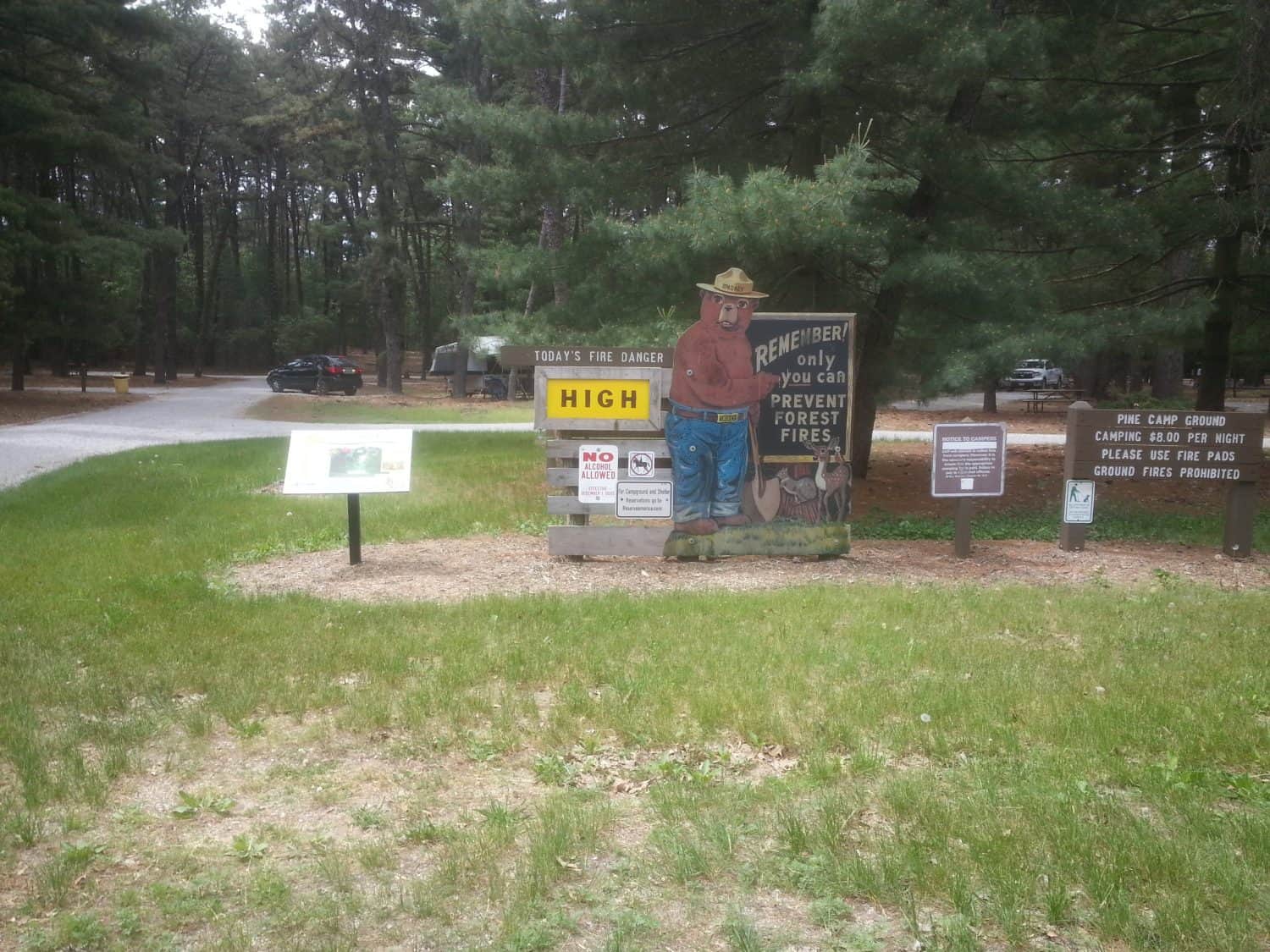We hope everyone had an enjoyable and safe Memorial Day Weekend. We certainly lucked out with weather and took full advantage of the seasonal temps by spending the majority of the weekend outdoors. We even took a trip to Central Illinois to check out Sand Ridge State Forest, which is a perfect example of a micro-climate. Tucked into the center of the state lies an area that looks and feels more like the Southwest than it does the Midwest, complete with sand and cacti. It was fascinating save for the persistent and aggravating gnats. Even more special was the vintage, Smokey the Bear sign that welcomed campers and reminded them of their moral and civil obligation.
As people flooded into garden centers and local greenhouses over the weekend, I couldn’t help but notice there seemed to be a stunning lack of ornamental grasses in their carts, and it got me to thinking. I think grasses carry negative connotations. I believe some think they are dull, utilitarian at best, and devastatingly invasive, but this simply isn’t true. Ornamental grasses are dynamic perennials that serve a multitude of functions. Their beauty changes with the seasons while adding movement, sound, and yearlong interest. They are low maintenance, yet make big impressions. Consider adding some of the following ornamental grasses into your landscape. You’ll be grateful you did.
Purple Maiden Grass
Clump forming, medium green blades with a purplish tinge develop into reddish hues as summer progresses, eventually maturing to a brilliant reddish-orange in Fall. Foliage gradually darkens to an attractive burgundy by Winter. Tiny purplish flowers appear above the foliage in late Summer and gradually turn into feathery, white plumes by Fall. The burgundy colored foliage and creamy white seed plumes continue well into winter, providing stunning winter interest and mesmerizing movement and sound when the wind blows.
Feather Reed Grass ‘Karl Foerster’
One of the more popular grasses, Feather Reed Grass grows straight and upright, reaching heights of 5′. Feathery, tan plumes and tiny flowers emerge in early summer, surrounded by its deep green leaves. In Fall, the seed heads mature to a soft, wheat-color that endures into Winter, adding interest and color. Feather Reed Grass provides an excellent vertical accent, whether used in a bed behind perennials, near a water feature, or as a screen.
Little Bluestem
This native prairie grass grows in shades of blue, silver, and green and matures to a fiery red in Fall with fluffy, silvery seed stalks. It’s airy, delicate texture comes to life in the gentlest of breezes. Little Bluestem works well as a groundcover or in a mixed border. Can also be used on hilly drifts for erosion control.
Variegated Japanese Forest Grass
This low growing, mounding grass has gracefully arching, golden foliage with green stripes. Hints of red and pink can be seen in the Fall. Works well when planted along pathways, under trees or shrubs or in a shade garden.
No other plant gives movement – hypnotic, gentle swaying, rhythmic sound, color, texture, and year round interest like ornamental grasses. Break away from the negative connotations and discover their true assets.
“What is life? It is the flash of a firefly in the night. It is the breath of a buffalo in the wintertime. It is the little shadow which runs across the grass and loses itself in the sunset.”
-Crowfoot quote
Best wishes,
Kim Sweeney

